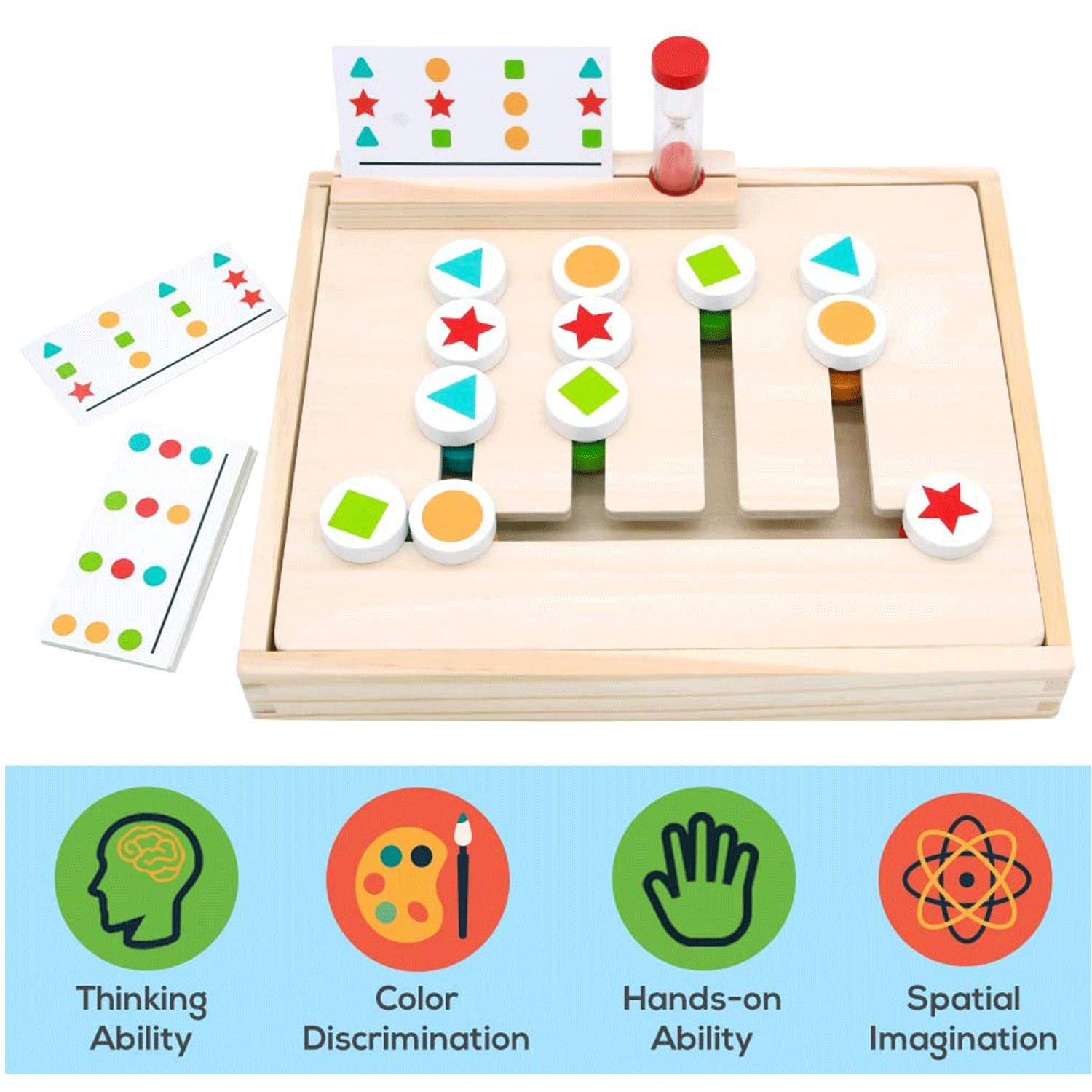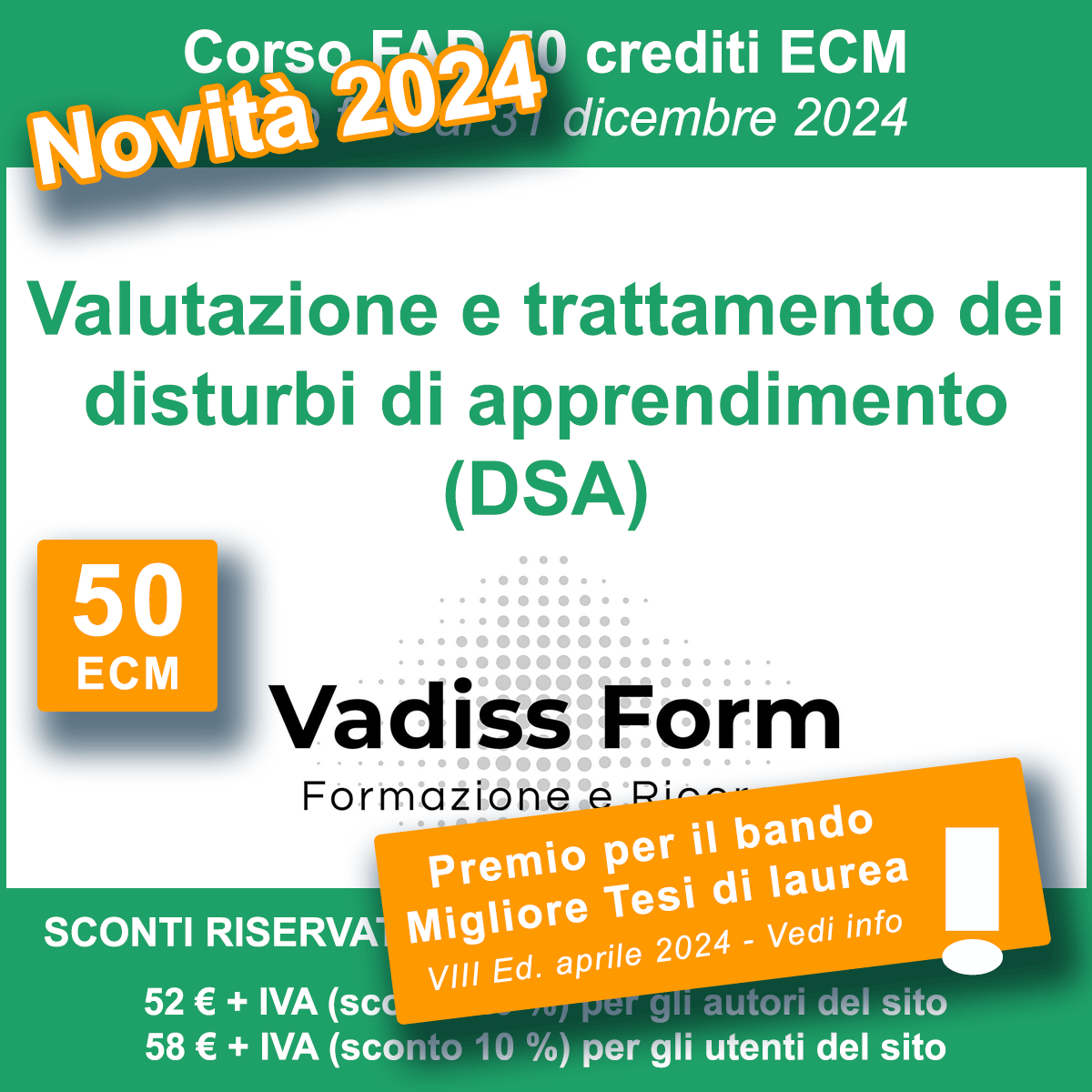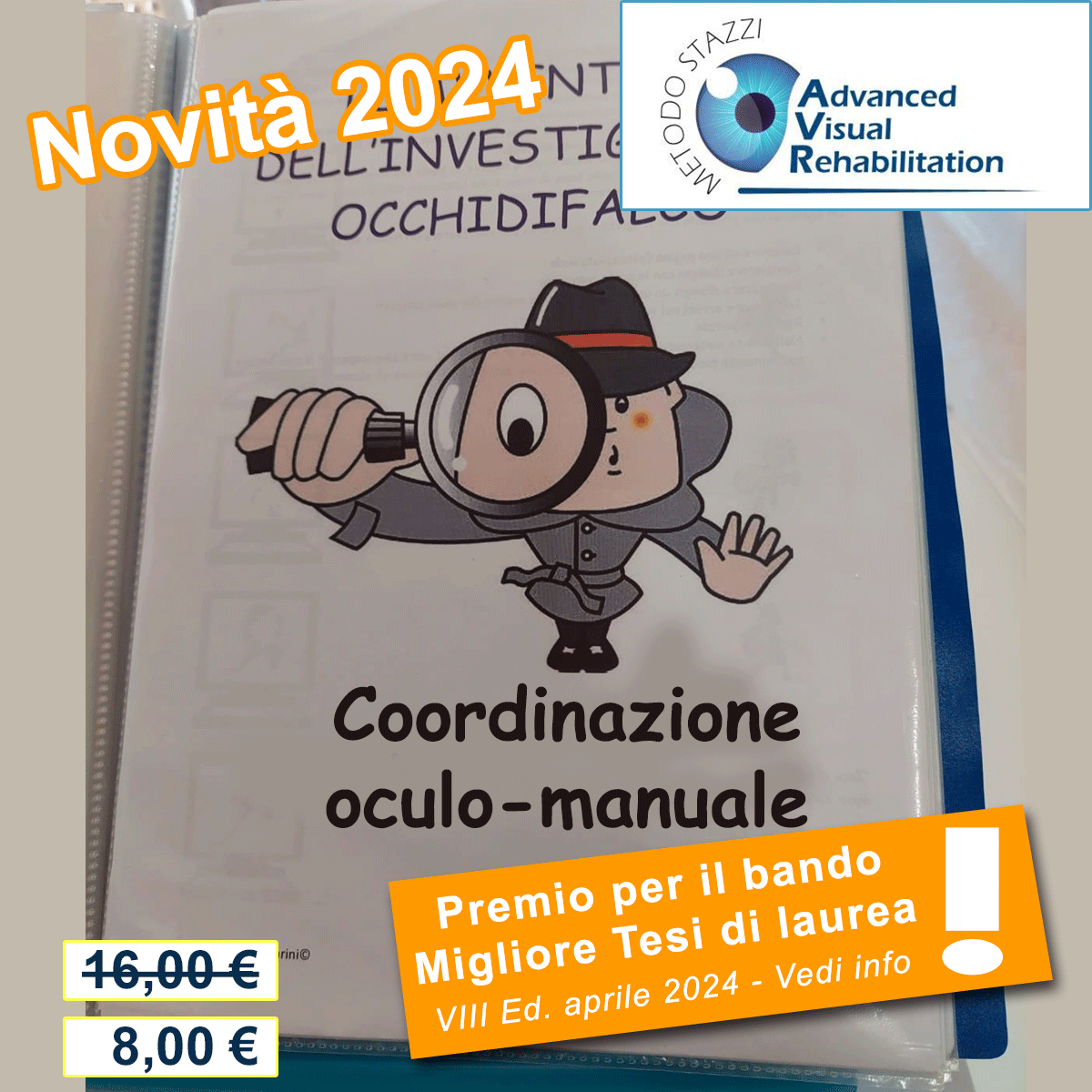BIBLIOGRAFIA - Empatia: origine, significato e disordini
- American Psychiatric Association, “DSM-IV-TR, Manuale diagnostico e statistico dei disturbi mentali”, Tex Revision, Masson, Milano, 2001;
- Armony J. L., Servan-Schreiber D., Romanski L. M., Cohen J. D., & LeDoux J. E. “Stimulus generalization of fear responses: Effects of auditory cortex lesions in a computational model and in rats”. Cerebral Cortex, 7, anno 1997 pp.157–165;
- Auyeung B., Baron-Cohen S., Ashwin E., et al.; “Fetal testosterone and autistic traits”. Br. J. Psychol., 100, anno 2009 pp. 1–22;
- Averill J. R. “Anger and aggression: An essay on emotion”. New York: Springer-Verlag; anno 1982;
- Baird A. A., Gruber S. A., Fein D. A., Maas L. C., Steingard R. J., Renshaw P. F., et al. “Functional magnetic resonance imaging of facial affect recognition in children and adolescents”; Journal of the American Academy of Child and Adolescent Psychiatry, 38, anno 1999, pp. 195–199;
- Baron-Cohen S., Leslie A. M., & Frith, U.” Does the autistic child have a ‘theory of mind ?”; Cognition, 21, anno 1985 pp. 37–46;
- Baron-Cohen S., & Goodhart F. “The “seeing leads to knowing” deficit in autism: the Pratt and Bryant probe” ; Br. J. Dev. Psychol., 12, anno 1994, pp. 397–402;
- Baron-Cohen S. “Autism and symbolic play”; Br. J. Dev. Psychol., 5, anno 1987, pp. 139–148;
- Baron-Cohen S. “Mindblindness: An Essay on Autism and Theory of Mind”; Boston: MIT Press/Bradford Books; anno 1995;
- Baron-Cohen S. “The hyper-systemizing, assortative mating theory of autism. Progress in Neuropsychopharm”; Biol. Psychiatry, 30, anno 2006 pp. 865–872;
- Baron-Cohen S. “I cannot tell a lie. In Character”, 3,2007, pp. 52–59;
- Baron-Cohen S. “Transported into a world of emotion”; The Psychologist, 20, anno 2007, pp. 76–77;
- Baron-Cohen S., Golan O., Wheelwright S., et al. “Mindreading : The Interactive Guide to Emotions”; London: Jessica Kingsley Limited; anno 2004;
- Baron-Cohen S., Hoekstra R. A., Knickmeyer R.,& Wheelwright S. “The Autism-Spectrum Quotient (AQ)-Adolescent” ; anno 2006;
- Baron-Cohen S., Jolliffe T., Mortimore C., et al. “Another advanced test of Theory of Mind: evidence from very high functioning adults with autism or Asperger Syndrome”. J. Child Psychol. And Psychiatry, 38,; anno 1997, pp. 813–822;
- Baron-Cohen S., Leslie A. M., & Frith U. “Does the autistic child have a ‘theory of mind ?” ; Cognition, 21, anno 1985 pp. 37–46;
- Baron-Cohen S., Leslie A. M., & Frith U. “Mechanical, behavioural and Intentional Understanding of Picture Stories in Autistic Children”; Br. J. Dev. Psychol., 4, anno 1986, pp. 113–125;
- Baron-Cohen S., O’Riordan M., Jones R., et al. “A new test of social sensitivity: Detection of faux pas in normal children and children with Asperger syndrome”; J. Autism Dev. Dis., 29, anno 1999, pp. 407–418;
- Baron-Cohen S., Ring H.,Wheelwright S., et al. “Social intelligence in the normal and autistic brain: an fMRI study”; Eur. J. Neurosci., 11, anno 1999 pp. 1891–1898;
- Baron-Cohen S., Wheelwright S., Hill J., et al. “The ‘Reading the Mind in the eyes’ test revised version: A study with normal adults, and adults with Asperger syndrome or high-functioning autism”; J. Child Psychol. Psychiatry, 42, anno 2001, pp. 241–252;
- Baron-Cohen S., Wheelwright S., Scahill V., et al. “Are intuitive physics and intuitive psychology independent?” J. Dev. Learning Dis., 5, anno 2001, pp. 47–78;
- Baron-Cohen S., Wheelwright S., Skinner R., et al. “The Autism Spectrum Quotient (AQ) : Evidence from Asperger syndrome/high functioning autism,males and females, scientists and mathematicians”; J. Autism Dev. Dis., anno 2001, pp. 31, 5–17;
- Batson C. D., Fultz J., & Schoenrade P. A. “Adults emotional reactions to the distress of others”; In N. Eisenberg & J. Strayer (Eds.), Empathy and its development. Cambridge: Cambridge University Press; anno 1987, pp. 163–185;
- Blakemore S. J. & Decety J. “From the perception of action to the understanding of intention”. Nature Reviews of Neuroscience, 2, anno 2001, pp. 561–567;
- Blair R.J.R., Coles M., “Expression recognition and behavioral problems in early adolescence”. In Cognitive Development, 15, , anno 2000, pp. 421-434.
- Blair R. J., Frith U., Smith N., Abell F., & Cipolotti L. “Fractionation of visual memory: Agency detection and its impairment in autism”. Neuropsychologia, 40, anno 2002, pp. 108–118;
- Blair R.J.R., Mitchell D., Blair K., “The psychopath: emotion and the brain. Blackwell”; Oxford; anno 2005;
- Blair R. J. R. “Facial expressions, their communicatory functions and neuro-cognitive substrates”; Philosophical Transactions of the Royal Society of London. Series B, Biological Sciences, 358, anno 2003 pp. 561–572;
- Blair R. J. R. “Neurobiological basis of psychopathy”; British Journal of Psychiatry, 182, anno 2003, pp. 5–7;
- Blanke O., Arzy S. “The out of body experience: disturbed self processing at the temporo-parietal junction”. In Neuroscientist, 11, anno 2005, pp. 16-24;
- Breiter H. C., Etcoff N. L., Whalen P. J., Kennedy W. A., Rauch S. L., Buckner R. L., et al. “Response and habituation of the human amygdala during visual processing of facial expression”; Neuron, 17, anno 1996, pp. 875–887;
- Brunet E., Sarfati Y., Hardy-Bayle M. C., & Decety J. “A PET investigation of the attribution of intentions with a nonverbal task”; Neuroimage, 11, anno 2000, pp. 157–166;
- Calder A.J., Lawrence A.D., Young A.W., “Neuropsychology of fear and loathing”. In Mature Reviews Neuroscience, 2, anno 2001 pp. 352-363;
- Calder A. J., Keane J., Manes F., Antoun N., & Young A. W., “Impaired recognition and experience of disgust following brain injury”; Nature Neuroscience, 3, anno 2000 pp. 1077–1078;
- Campbell R., Heywood C., Cowey A., Regard M. Landis T. “Sensitivity to eye gaze in prosopagnostic patients and monkeys with superior temporal sulcus ablation”. In Neuropsychologia, 28, anno 1990 pp. 1123-1142;
- Carr L., Iacoboni M., Dubeau, M. C., Mazziotta J. C., & Lenzi G. L. “Neural mechanisms of empathy in humans: A relay from neural systems for imitation to limbic areas”; Proceedings of the National Academy of Sciences of the United States of America, 29, anno 2003 pp. 5497–5502;
- Chartrand T.L., Bargh J.A.,” The chameleon effect; the perception-bheavior link and social interaction”. In Jornal of Personality and Social Psychology, 76, anno 1999 pp. 839-910;
- Castelli F., Frith C., Happe F., et al. “Autism, Asperger syndrome and brain mechanisms for the attribution of mental states to animated shapes”; Brain, 125, anno 2002, pp. 1839–1849;
- Cools R., Clark L., Owen A. M., & Robbins, T. W., “Defining the neural mechanisms of probabilistic reversal learning using event-related functional magnetic resonance imaging”; The Journal of Neuroscience, 22, anno 2002, pp. 4563–4567;
- Cubero I., Thiele T. E., & Bernstein, I. L., “ Insular cortex lesions and taste aversion learning: Effects of conditioning method and timing of lesion”; Brain Research, 839, anno 1999 pp. 323–330;
- Damasio A.R., l’errore di Cartesio, Emozione, Ragione e Cervello Umano. Tr. It. Adelphi, Milano 1995; anno 1994;
- Davis M. H. “Empathy: A social psychological approach”. Boulder, CO: Westview Press; anno 1994;
- de Gelder B., Vroomen J., Pourtois G., & Weiskrantz L., “Non-conscious recognition of affect in the absence of striate cortex”; Neuroreport, 10, anno 1999 pp. 3759–3763;
- Dodge K. A., “ Social-cognitive mechanisms in the development of conduct disorder and depression”; Ann. Rev. Psychol., 44, anno 1993, pp. 559–584;
- Feshbach N. D., “Studies of empathic behavior in children”. In B. A. Maher (Ed.), Progress in experimental personality research. New York: Academic Press; anno 1978;
- Feshbach N. D., “Parental empathy and child adjustment/maladjustment”. In N. Eisenberg & J. Strayer (Eds.), Empathy and its development. New York: Cambridge University Press; anno 1987;
- Fonagy P., “On tolerating mental states: theory of mind in borderline personality”; Bull. Anna Freud Centre, 12, anno 1989, pp. 91–115;
- Frith U., “Autism: Explaining the Enigma”; Oxford: Basil Blackwell; anno 1989;
- George M. S., Ketter T. A., Gill D. S., Haxby J. V., Ungerleider L. G., Herscovitch P., et al, “Brain regions involved in recognizing facial emotion or identity: An oxygen-15 PET study”; Journal of Neuropsychiatry, 5, anno 1993, pp. 384–393;
- Giuberti V. et al., "L'utilizzo delle storie sociali in soggetti con disturbo dello spettro autistico", in " Autismo e disturbi dello sviluppo" ; Erickson N.3/2004;
- Grandin T. “Thinking in Pictures”; WA: Vintage Books; Vancouver; anno 1996;
- Hadwin J., Baron-Cohen S., Howlin P., et al. “Does teaching a theory of mind have an effect on social communication in children with autism?”; J. Autism Dev. Dis., 27, anno 1997 pp. 519–538;
- Happe F.,Ehlers S., Fletcher P., et al. “Theory of mind in the brain. Evidence from a PET scan study of Asperger Syndrome”; Neuroreport, 8, London: UCL Press;; anno 1996, pp. 197–201;
- Halgren E., Raij T., Marinkovic K., Jousmaki V., & Hari R., “Cognitive response profile of the human fusiform face area as determined by MEG”; Cerebral Cortex, 10, anno 2000, pp. 69–81;
- Haxby J. V., Hoffman E. A., & Gobbini M. I., “The distributed human neural system for face perception”; Journal of Cognitive Neuroscience, 4, anno 2000, pp. 223–233;
- Hoffman M.L., “Discipline and internalization”. In Developmental Psychology, 30, anno 1994, pp. 853-860;
- Hutchison W.D., Davis K.D., Lozano A.M., Tasker R.R., Dostrovsky J.O., “Pain-related neurons in the human cingulate cortex”. In Nature Neuroscience, 2, anno 1999, pp. 403-405;
- Jolliffe T., & Baron-Cohen S., “Are people with autism or Asperger’s Syndrome faster than normal on the Embedded Figures Task?”; J. Child Psychol. Psychiatry, 38,anno 1997, pp. 527–534;
- King-Casas B, Sharp C., Lomax-Bream L. Lohrenz T., Fonagy P., Montague P.R., “The rupture and repair of cooperatin in borderline personality disorder”. In Science, 321, anno 2008, pp. 806-810;
- Kringelbach M. L., & Rolls E. T., “Neural correlates of rapid reversal learning in a simple model of human social interaction”; Neuroimage, 20, anno 2003, pp. 1371–1383;
- Kumar P., Waiter G., Ahearn T., Milders M., Reid I., Steele J.D., “Frontal operculum temporal difference signals and social motor response learning”. In Human Brain Mapping, 30, anno 2008, pp. 1421-1430;
- Lamm C., Baston C.D., Decety J., “The neural substrate of human emphaty: effects of perspective-taking and cognitive appraisal”. In Journal of cognitive neuroscience, 19, anno 2007, pp. 42-58;
- Lee M., Prentice N.M., “Interrelation of emphaty, cognition, and moral reasoning whit dimentions of juvenile delinquency”. In Journal of Abnormal Child Psychology, 16, 1988, pp.127-139.
- Lee K.H., Siegle G.J. , “Common and distinct brain networks, underlying explicit emotional evaluation: a meta-analytic study”. In Social Cognitive and Affective Neuroscience, pubblicato online il 6 marzo 2009;
- Leslie K. R., Johnson-Frey S. H., & Grafton S. T., “Functional imaging of face and hand imitation: Towards a motor theory of empathy”; Neuroimage, 21, anno 2004 pp. 601–607;
- Mayberg H.S., Lozano A.M. Voon V. McNelly H.E., Seminowicz D., Hamani C., Shwalb J.M. Kennedy S.H. anno 2005;
- Mineka S., & Cook M., “Mechanisms involved in the observational conditioning of fear”; Journal of Experimental Psychology: General, 122, anno 1993, pp. 23–38;
- Morris J. S., DeGelder B., Weiskrantz L., & Dolan R. J., “Differential extrageniculostriate and amygdala responses to presentation of emotional faces in a cortically blind field”; Brain, 124, anno 2001, pp. 1241–1252;
- Morris J. S., Ohman A., & Dolan R., “A subcortical pathway to the right amygdala mediating ‘‘unseen’’ fear”; Proceedings of the National Academy of Sciences of the United States of America, 96, anno 1999, pp. 1680–1685;
- Phillips M. L., Young A. W., Scott S. K., Calder A. J., Andrew C., Giampietro, V., et al., “Neural responses to facial and vocal expressions of fear and disgust”; Proceedings of the Royal Society of London. Series B. Biological Sciences, 265, anno 1998, pp. 1809–1817;
- Plaisted K., O’Riordan M., & Baron-Cohen S., “Enhanced visual search for a conjunctive target in autism: A research note”; J. Child Psychol. Psychiatry, 39, anno 1998 pp. 777–783;
- Preston S. D., & de Waal F. B. “Empathy: Its ultimate and proximate bases”; Behavioral and Brain Sciences, 25,anno 2002 pp. 1–20;
- Rizzolatti G., Fogassi L., & Gallese V., “Neurophysiological mechanisms underlying the understanding and imitation of action”; Nature Reviews of Neuroscience, 2, anno 2001, pp. 661–670;
- Rizzolati G., Craighero L., “The mirror-neuron system”. In Annual Review of Neuroscience, 27, anno 2004, pp. 169-192;
- Shepherd S.V., Klein J.T., Deaner R.O., Platt M.L., “Mirroring of attention by neurons in macaque parietal cortex”. In Proceedings of the National Accademy of Sciences of the United States of America, 106, anno 2009, pp. 9489-9494;
- Shlesinger L., “Pathological narcissism and serial homicide: Review and case study”. In Current Psychology, 17, anno 1997, pp. 212-221;
- Shamay-Tsoory S. G., Tomer R., Goldsher D., Berger B. D., & Aharon-Peretz, J., “ Impairment in cognitive and affective empathy in patients with brain lesions: Anatomical and cognitive correlates”; Journal of Clinical and Experimental Neuropsychology, 26, anno 2004, pp. 1113–1127;
- Sharot T. Ricciardi A.M., Raio C.M., Phelps E.A., “Neural mechanism mediating optmis bias”. In Nature, 450, anno 2007, pp. 102-105;
- Shah A., & Frith U., “Why do autistic individuals show superior performance on the block design test?”; J. Child Psychol. Psychiatry, 34, anno 1993, pp. 1351–1364;
- Sholtz J., Triantafyllou, C., Whitfield-Gabrieli S., Brown E.N., Saxe R., “Distinct regions of right temporo-parietal junction are selective for theory of mind and exogenous attention”. In Public Library of Science One, 4, anno 2009, p. 4869;
- Small D. M., Gregory M. D., Mak Y. E., Gitelman, D., Mesulam, M. M., & Parrish, T., “Dissociation of neural representation of intensity and affective valuation in human gustation”; Neuron, 39, anno 2003, pp. 701–711;
- Smetana J.G., Braeges J.L., “The development of toddlers’moral and conventional judgmentd”. In Merril-Palmer Quarterly, 36, anno 1990, pp. 329-346;;
- Smith A. “The theory of moral sentiments”. New York: Augustus M. Kelley (Originally published 1759); anno 1966;
- Smith I. M., & Bryson S. E. “Imitation and action in autism: A critical review”; Psychological Bulletin, 116, anno 1994, pp. 259–273;
- Sodian B., & Frith U., “Deception and sabotage in autistic, retarded, and normal children”; J. Child Psychol. Psychiatry, 33, anno 1992 pp. 591–606;
- Soloff P.H., Meltzer C.C., Greer P.J., Constantine, D., Kelly, T.M., “A flenfluramine-activated FDG-PET study of borderline personality disorder” in Biological Psychiatry, 47, anno 2000, pp. 5540-547;
- Stone V., Baron-Choen, S., Knight K., “Frontal lobe contribution to theory of mind”. In Journal oh cognitive neuroscience, 10, anno 1998, pp. 640-656;
- Swettenham J., Baron-Cohen S., Charman T., et al., “The frequency and distribution of spontaneous attention shifts between social and nonsocial stimuli in autistic, typically developing, and non-autistic developmentally delayed infants”; J. Child Psychol. Psychiatry, 9, anno 1998, p. 747–753;
- Trentini C. , Speranza A. , Lenzi G. , Ammanniti M., “Rispecchiamenti: l’amore materno e le basi neurobiologiche dell’empatia”; Il Pensiero Scientifico Editore, Roma; anno 2008;
- Vuilleumier P., Armony J. L., Driver J., & Dolan R. J., “Distinct spatial frequency sensitivities for processing faces and emotional expressions”; Nature Neuroscience, 6, anno 2003, pp. 624–631;
- Wicker B., Keysers C., Plailly J., Royet J.P., Gallese, V. Rizzolati G. , “Both of us disgusted in my insula: The common neural basis of seeing and feeling disgust”. In Neuron, 40, anno 2003, pp. 865-873;
- Wimmer H., & Perner J., “Beliefs about beliefs: Representation and constraining function of wrong beliefs in young children’s understanding of deception”; Cognition, 13, anno 1983, pp. 103–128;
- Wing L., “The Autistic Spectrum”;, UK: Pergamon; Oxford; anno 1997.
Capitolo I - EMPATIA: CENNI STORICI Capitolo II - Nuovi orientamenti nello studio dell'empatia ed individuazione di specifici sottosistemi Capitolo III - QUADRI CLINICI LEGATI AI DISORDINI DELL'EMPATIA Capitolo IV - Modalità di approccio ai disordini dell'empatia e strategie terapeutiche Tesi di Laurea di: Emanuela VARRIALE
Indice
PREMESSA
INTRODUZIONE
CONCLUSIONI
BIBLIOGRAFIA
































